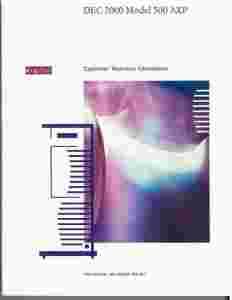Dokumentacja DEC 2000 Model 500 AXP

Aukcja w czasie sprawdzania była zakończona.
Cena kup teraz: 20 zł
Użytkownik e_tom
numer aukcji: 2415351073
Miejscowość Katowice
Wyświetleń: 9
Koniec: 22-06-2012, 10:33
Dodatkowe informacje:
Stan: Nowy
